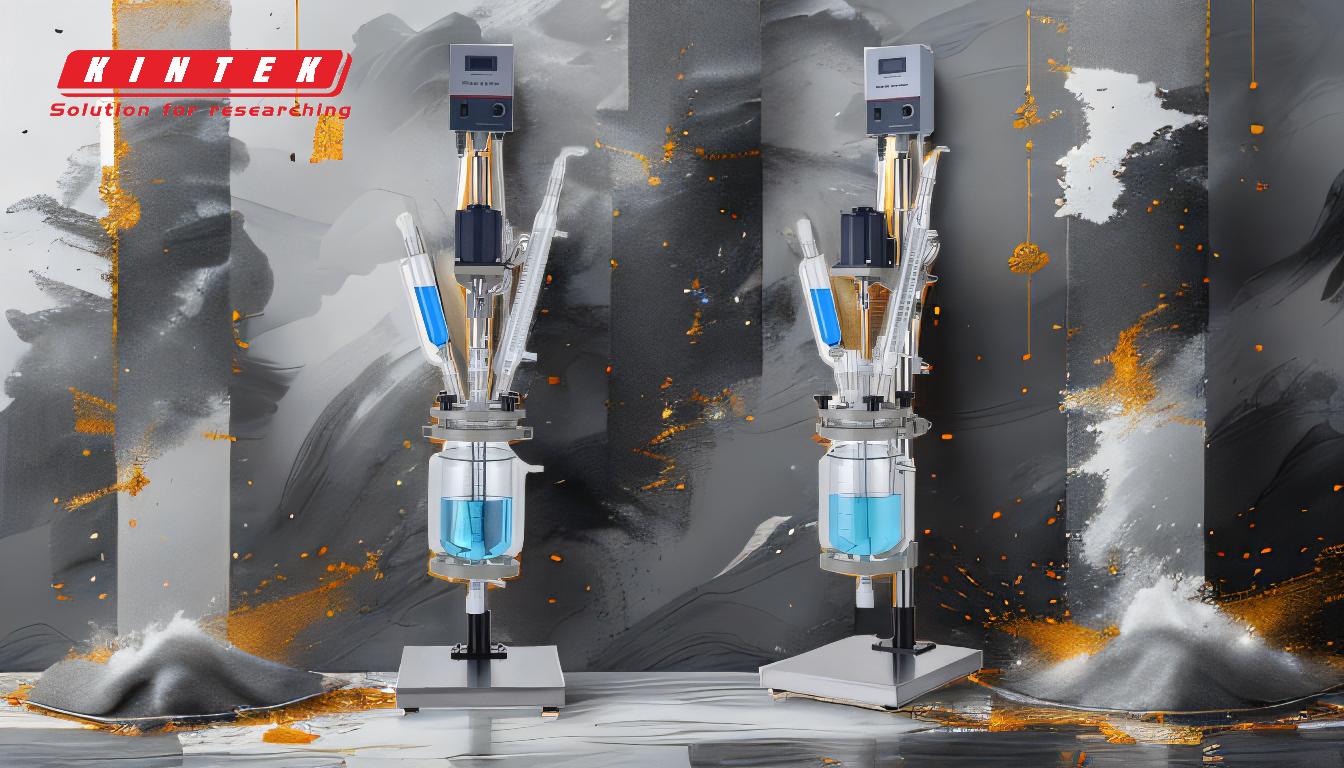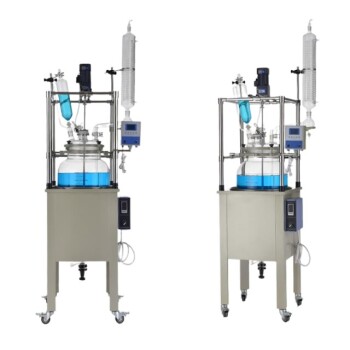A reactor jacket is a critical component of a jacketed reactor, designed to regulate the temperature of the reaction mixture inside the vessel. It achieves this by circulating a heating or cooling fluid around the vessel, ensuring precise temperature control. This capability is essential for maintaining consistent reaction conditions, which directly impacts the quality and yield of the product. The jacket enables efficient heat transfer, allowing reactions to be scaled up reliably while ensuring uniform temperature distribution. This functionality is particularly important in processes where temperature sensitivity is a key factor, such as in chemical synthesis, pharmaceuticals, and food production. Overall, the jacket enhances process control, improves product quality, and supports scalability.
Key Points Explained:

-
Temperature Control
- The primary function of a reactor jacket is to regulate the temperature of the reaction mixture inside the vessel.
- This is achieved by circulating a heating or cooling fluid (such as water, oil, or glycol) through the jacket, which surrounds the reactor vessel.
- The jacket ensures that the reaction mixture is maintained at the desired temperature, which is critical for achieving optimal reaction conditions and product quality.
-
Heat Transfer Efficiency
- The jacket is filled with a heat transfer fluid, which facilitates efficient heating or cooling of the reaction mixture.
- The uniform exchange of heat between the fluid in the jacket and the walls of the vessel ensures consistent temperature distribution throughout the reaction mixture.
- This uniformity is essential for preventing hot or cold spots, which could lead to incomplete reactions or product degradation.
-
Scalability and Consistency
- Jacketed reactors enable scientists and engineers to scale up reactions while maintaining consistent results.
- The precise temperature control provided by the jacket ensures that reactions can be replicated reliably at larger scales, increasing yield and improving process efficiency.
- This is particularly important in industries like pharmaceuticals, where consistency and reproducibility are critical.
-
Enhanced Product Quality
- By maintaining precise temperature control, the jacket helps improve the quality of the final product.
- Consistent reaction conditions minimize variations in product composition, purity, and yield, leading to higher-quality outputs.
- This is especially important in processes where temperature sensitivity is a key factor, such as in the synthesis of fine chemicals or biological materials.
-
Versatility in Applications
- Jacketed reactors are used in a wide range of industries, including chemical manufacturing, pharmaceuticals, food production, and biotechnology.
- The ability to heat or cool the reaction mixture makes jacketed reactors suitable for a variety of processes, from exothermic reactions that require cooling to endothermic reactions that need heating.
- The jacket's design can be tailored to meet specific process requirements, such as high-pressure or corrosive environments.
-
Types of Jacketed Reactors
- Glass jacketed reactors are commonly used in laboratories and small-scale production due to their transparency and corrosion resistance.
- Stainless steel or other metal jacketed reactors are preferred for industrial-scale applications, where durability and high-pressure tolerance are required.
- The choice of jacket material and design depends on the specific needs of the process, including temperature range, pressure, and chemical compatibility.
-
Operational Benefits
- Jacketed reactors reduce the risk of thermal shock by providing gradual and controlled temperature changes.
- They also minimize energy consumption by optimizing heat transfer efficiency, making them cost-effective for long-term use.
- The ability to automate temperature control further enhances operational efficiency and reduces the need for manual intervention.
In summary, the jacket on a reactor plays a vital role in ensuring precise temperature control, efficient heat transfer, and consistent reaction conditions. These capabilities make jacketed reactors indispensable for scaling up processes, improving product quality, and achieving reliable results across a wide range of industries.
Summary Table:
| Key Feature | Description |
|---|---|
| Temperature Control | Circulates heating/cooling fluid for precise regulation of reaction conditions. |
| Heat Transfer Efficiency | Ensures uniform temperature distribution, preventing hot or cold spots. |
| Scalability | Enables reliable scaling of reactions while maintaining consistency. |
| Product Quality | Improves product purity, yield, and consistency through controlled conditions. |
| Versatility | Suitable for chemical, pharmaceutical, food, and biotech industries. |
| Types of Jackets | Glass for labs, stainless steel for industrial applications. |
| Operational Benefits | Reduces thermal shock, minimizes energy use, and supports automation. |
Discover how a reactor jacket can optimize your process—contact our experts today!










